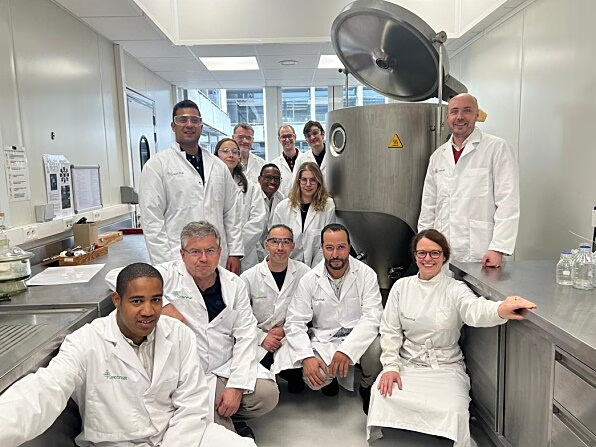The world is facing a key challenge: rising energy demand, particularly due to electromobility, requires more efficient and sustainable energy storage systems and a growing share of renewable energies.

Lithium-ion batteries (LIBs) play a key role in this, but their further development is hampered by limited resources, environmental impacts, and technical limitations of existing materials. Dependence on critical raw materials such as natural graphite and cobalt not only poses a supply risk but also raises ethical and environmental concerns. At the same time, conventional carbon-based anodes are reaching their capacity limits, requiring new material concepts to meet the increasing demands for energy storage.
The MoSiLIB research project, led by AIT, addresses this very issue by developing an innovative composite anode based on silicon and tin sulfide (SnS2). The goal is to circumvent the disadvantages of existing anode materials, reduce the use of critical raw materials, and significantly improve battery performance and cycle stability. A particular focus is on the use of high-purity silicon recycled from end-of-life solar modules. This contributes to resource conservation and sustainability.
The chemical interaction of SnS2 with silicon creates Si/Li2S and Sn/Li2S heterostructures that buffer the volume expansion of the anode particles and reduce agglomeration during charging cycles. This increases the battery lifetime, making the composite anode particularly suitable for Generation 3b LIBs with LNMO cathodes. Furthermore, the project relies on environmentally friendly, water-based processing methods and scales the technology to a semi-industrial level to ensure feasibility and industrial applicability.
Project objectives and methods
The main goal of MoSiLIB is to develop a Si-(graphite)-SnS2 composite anode that achieves a reversible capacity of 800 mAh/g over more than 1000 cycles. This will be achieved using a novel material processing technique based on a combination of spray drying and high-energy ball milling. The resulting anode materials will be tested in complete high-voltage cells with LNMO cathodes.
In addition to experimental research, the project relies on multi-scale modeling to optimize the performance of the anode materials and gain a detailed understanding of aging mechanisms. In addition to material development, another focus is on the semi-industrial scaling of the synthesis processes and water-based electrode manufacturing to ensure sustainable and economical production. The newly developed anode materials will be extensively tested in button and pouch cells, including multilayer pouch cells, to validate their long-term performance and scalability.
Contribution from the AIT Austrian Institute of Technology
AIT plays a central role in MoSiLIB. In addition to project management and coordination, AIT focuses particularly on electrochemical investigations of SnS2 anodes and LNMO cathodes. The goal is to evaluate their performance and long-term stability under real operating conditions.
Another focus of AIT is the development and optimization of pilot-scale electrode processing methods. Using state-of-the-art pilot plants, the scalability of the processes is investigated and further developed to enable the most sustainable and economical production of silicon-tin sulfide composite anodes.
"With MoSiLIB, we are taking a decisive step toward sustainable and high-performance lithium-ion batteries. By combining innovative materials and environmentally friendly manufacturing processes, we can not only improve the efficiency of batteries but also reduce their ecological impact. This is a significant contribution to future energy storage and the further development of electromobility," explains AIT researcher Damian Cupid, who leads the project.
